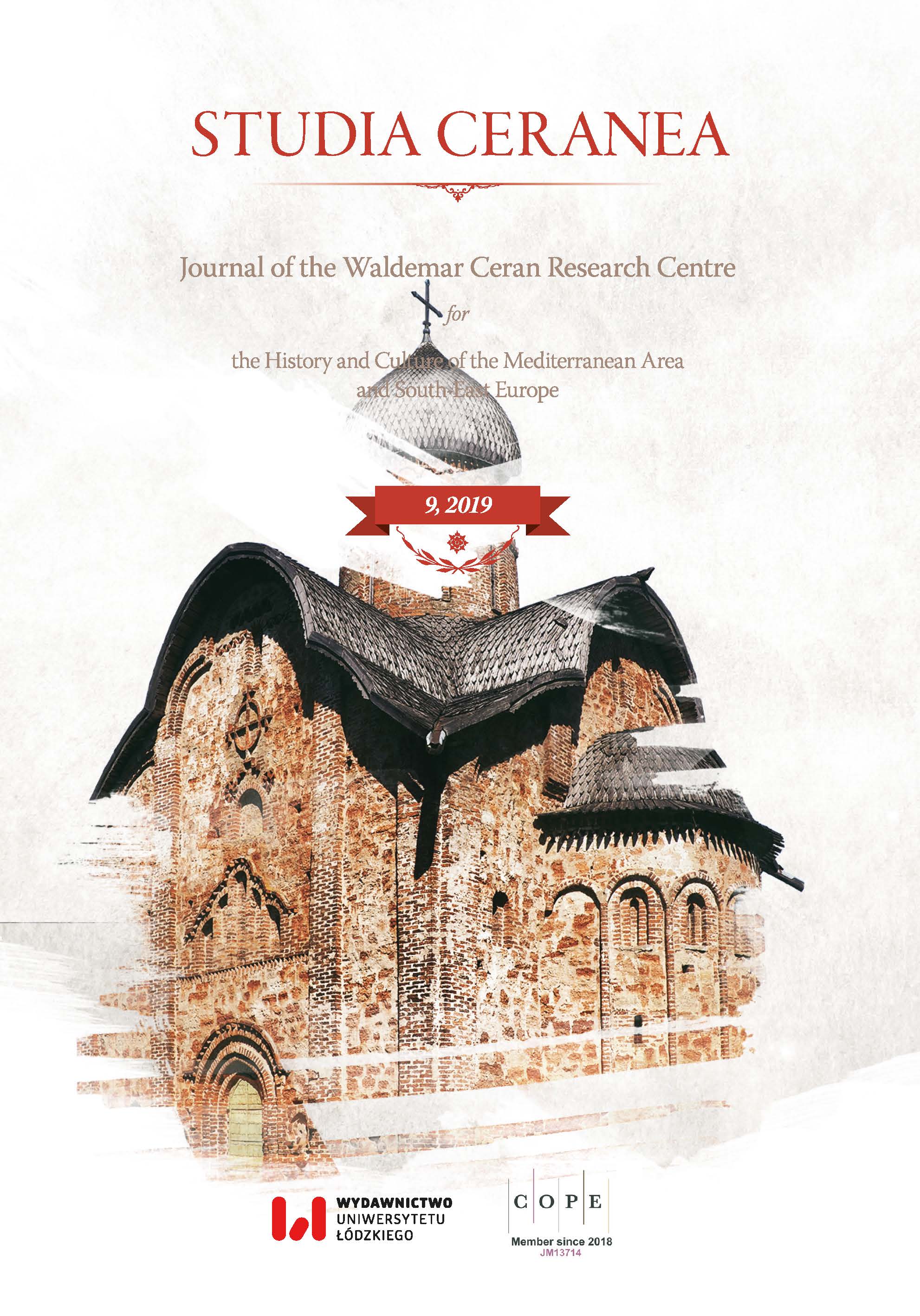The Old Church Slavonic Version of Epiphanius of Salamis’ Panarion in the Ephraim Kormchaya (the 12th Century)
The Old Church Slavonic Version of Epiphanius of Salamis’ Panarion in the Ephraim Kormchaya (the 12th Century)
Author(s): Tatyana LekovaSubject(s): History of Church(es), 6th to 12th Centuries, History of Religion
Published by: Wydawnictwo Uniwersytetu Łódzkiego
Keywords: Efremovskaya Kormchaya; Epiphanios of Salamis; Panarion; heresies; word formation; calques; compounds
Summary/Abstract: The Panarion treatise is a dogmatic and polemical writing that earned Epiphanius his well-deserved reputation of a zealous defender of the Orthodox faith and a “hunter of heresies”. Its list of heresies was translated into Church Slavonic during the 1st Bulgarian Empire at the time of tsar Symeon and quickly spread throughout the Slavic-Orthodox world. It is a part of the oldest Slavonic version of Syntagma of XIV titles without any commentary (Syntagma XIV titulorum sine scholiis), called Efremovskaya Kormchaya. It is a monumental compendium of the centenary heresiological literature, and is the most complete treatise on heresies that the age of the Fathers left us. The paper presents a description of the three books and seven volumes of the Panarion with a list of eighty heresies, sects and schisms – twenty heresies before the incarnation of Christ and sixty of Christian times. Within the work attributed to Epiphanius, a chapter of the Ecclesiastical History of Theodoret of Cyrus and two other chapters of the theological-philosophical work Arbiter or Umpire by Joannes Philoponus have been identified. A number of 103 heresies was revealed, all of them ascribed to Epiphanius. It is presented as a preliminary study of 140 terms used by an anonymous Slavic translator. To the various lexemes, two different criteria have been applied: grammatical and semantic. The research determines 15 ethnonyms and eponyms, 60 anthroponyms formed on the names of the heresiarchs, 30 calques from Greek and 35 compounds. Among the latter, two distinct groups have been distinguished: structural calques, exactly corresponding to the Greek models, and “neologisms”, formally independent of the Greek formations. Adaptation to the original Bulgarian linguistic system was achieved by the translator (or the editor) by using interpretative supplements, i.e. glosses. It is assumed that the translator’s primary objective was to remain as faithful as possible to the Greek original. It turns out that the translator showed excellent knowledge of the complex Greek models of word formation and exceptional skills in adapting them to the Palaeoslavic linguistic system. The compound lexemes were created for stylistic reasons and are a result of a specific translation technique.
- Issue Year: 2019
- Issue No: 9
- Page Range: 39-57
- Page Count: 19
- Language: English

